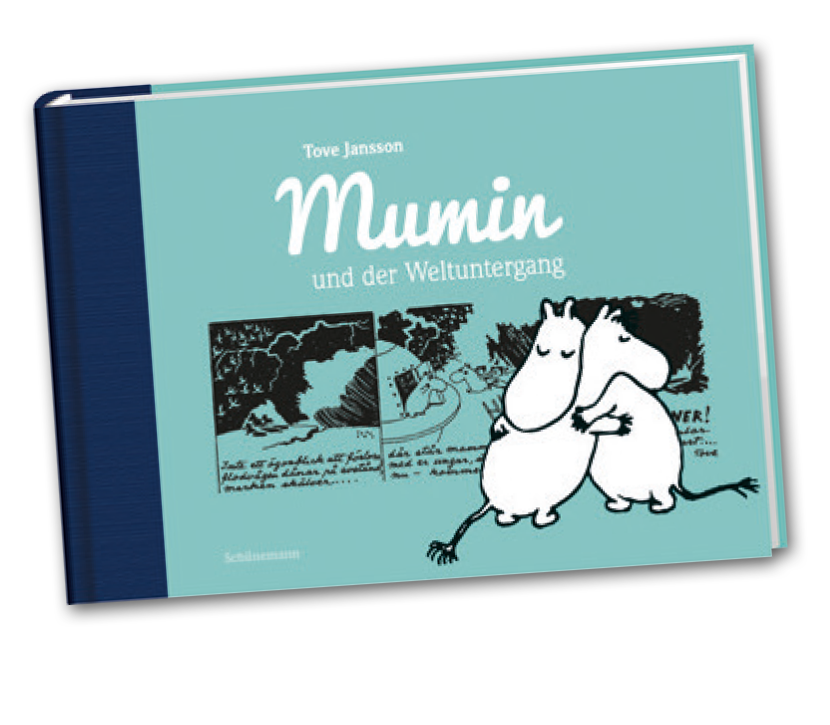Das neue Mumin-Buch
Die Buchvorstellung
Am 23. März 2022 wurde im Haus Borgstede und Becker im Schifffahrtsmuseum in Brake das druckfrische Buch „Mumin und der Weltuntergang“ vorgestellt.
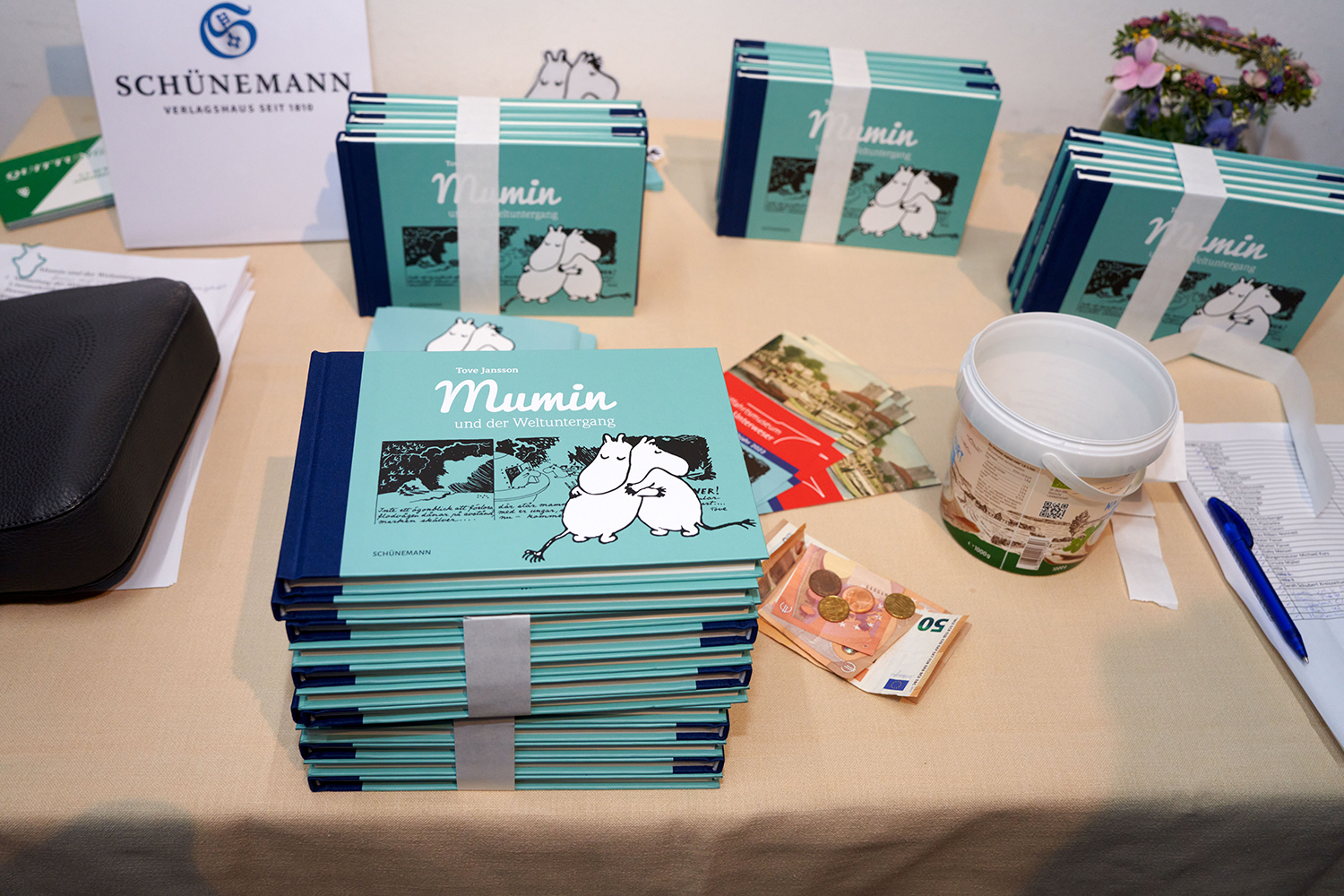
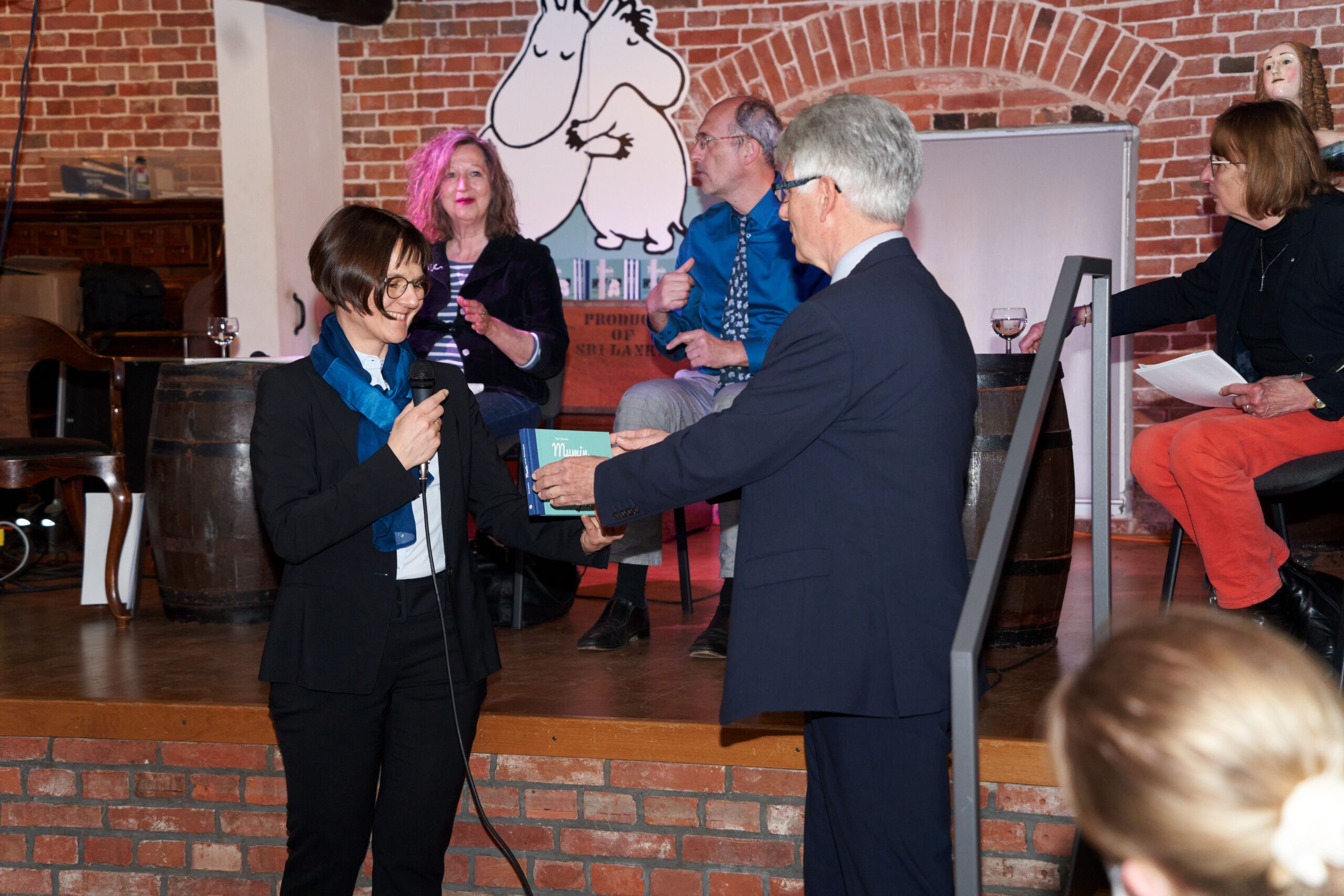
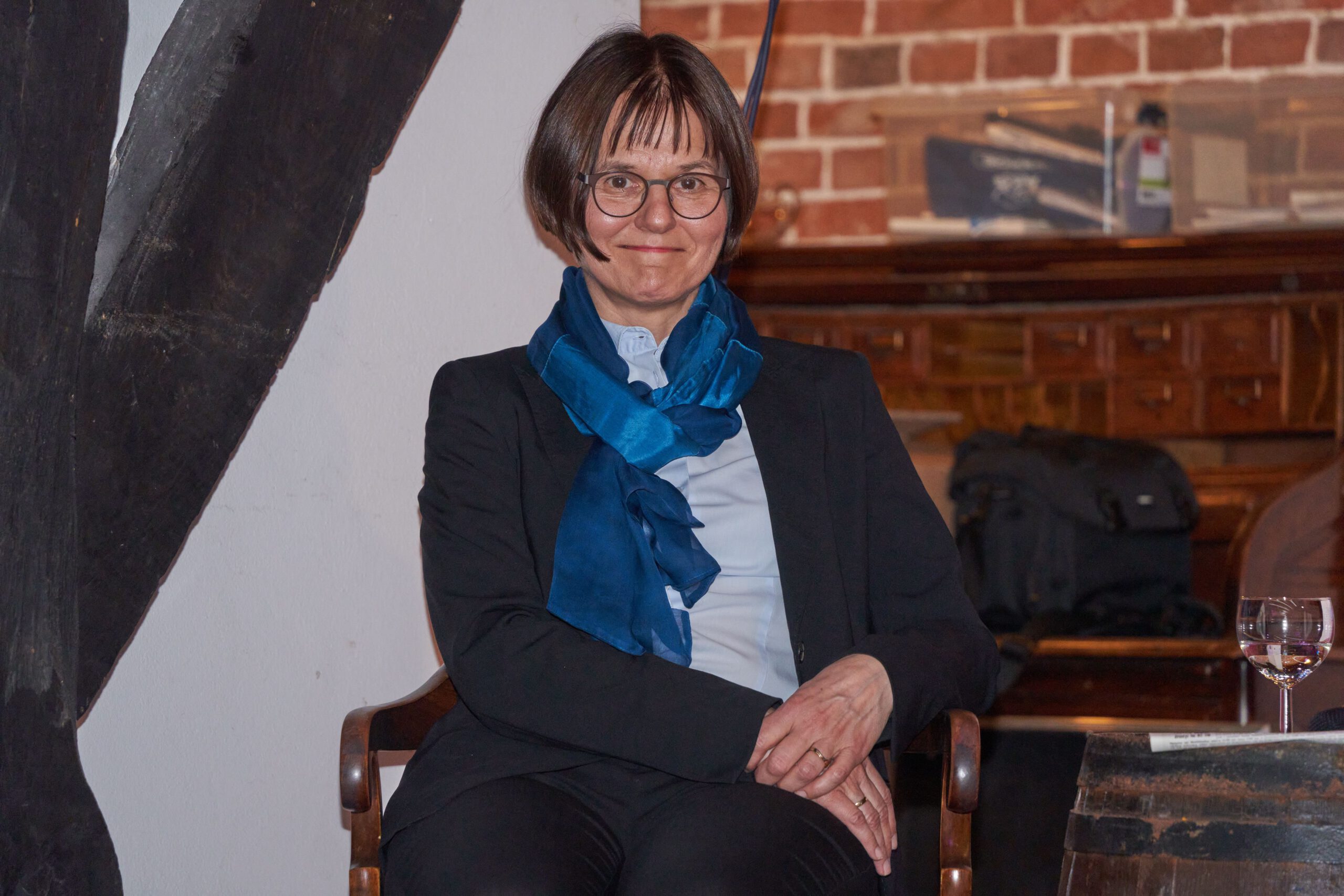
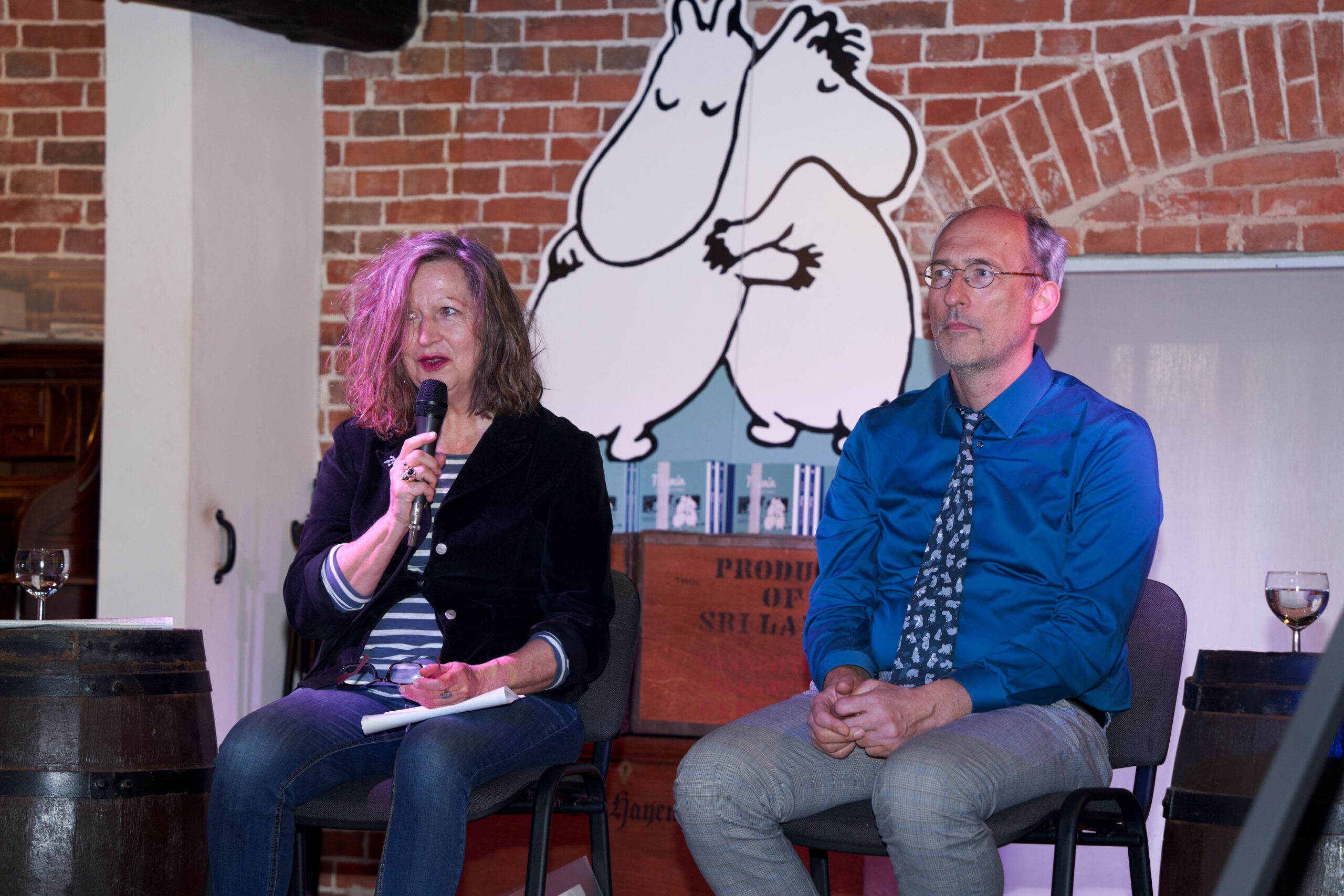


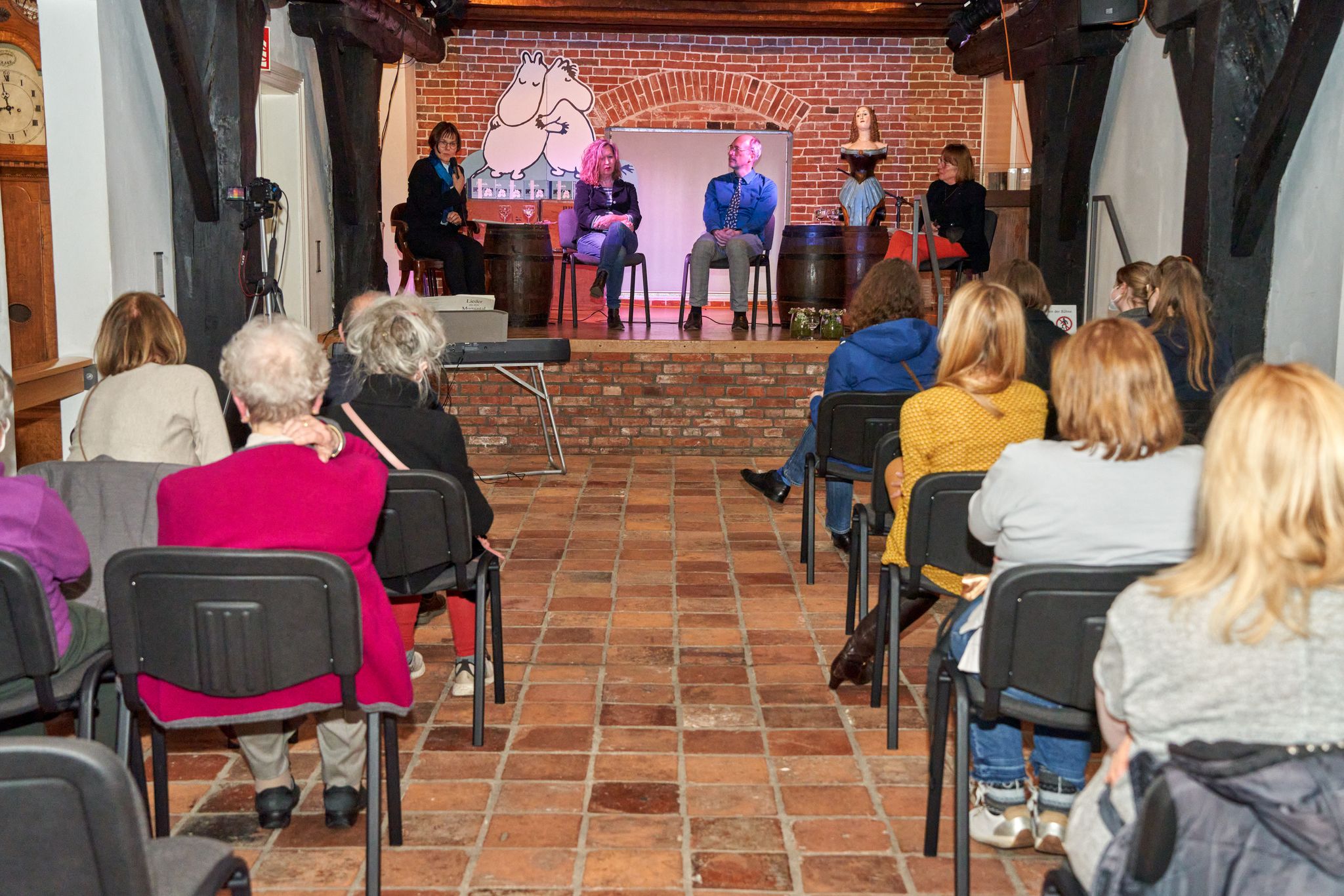
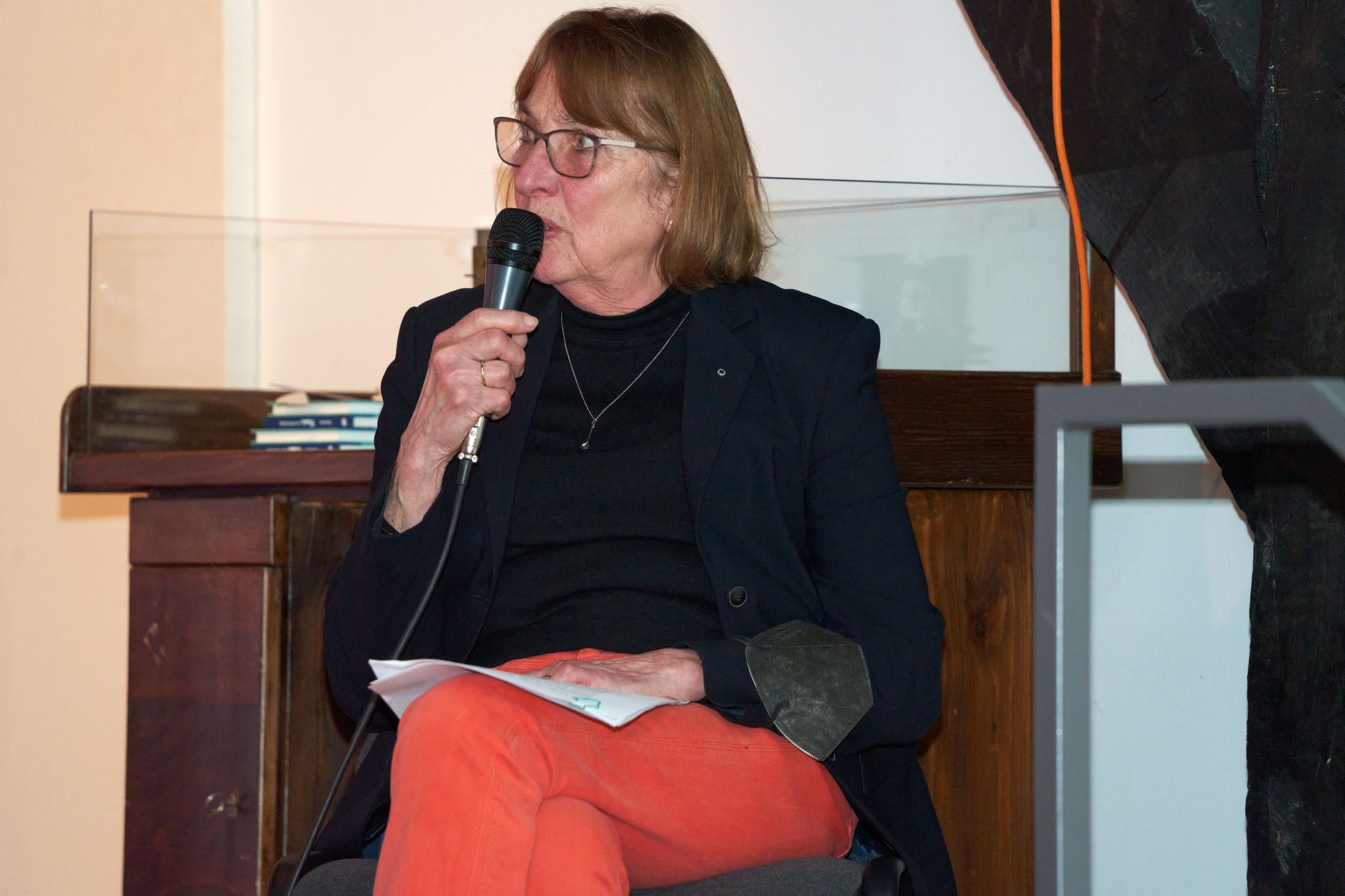
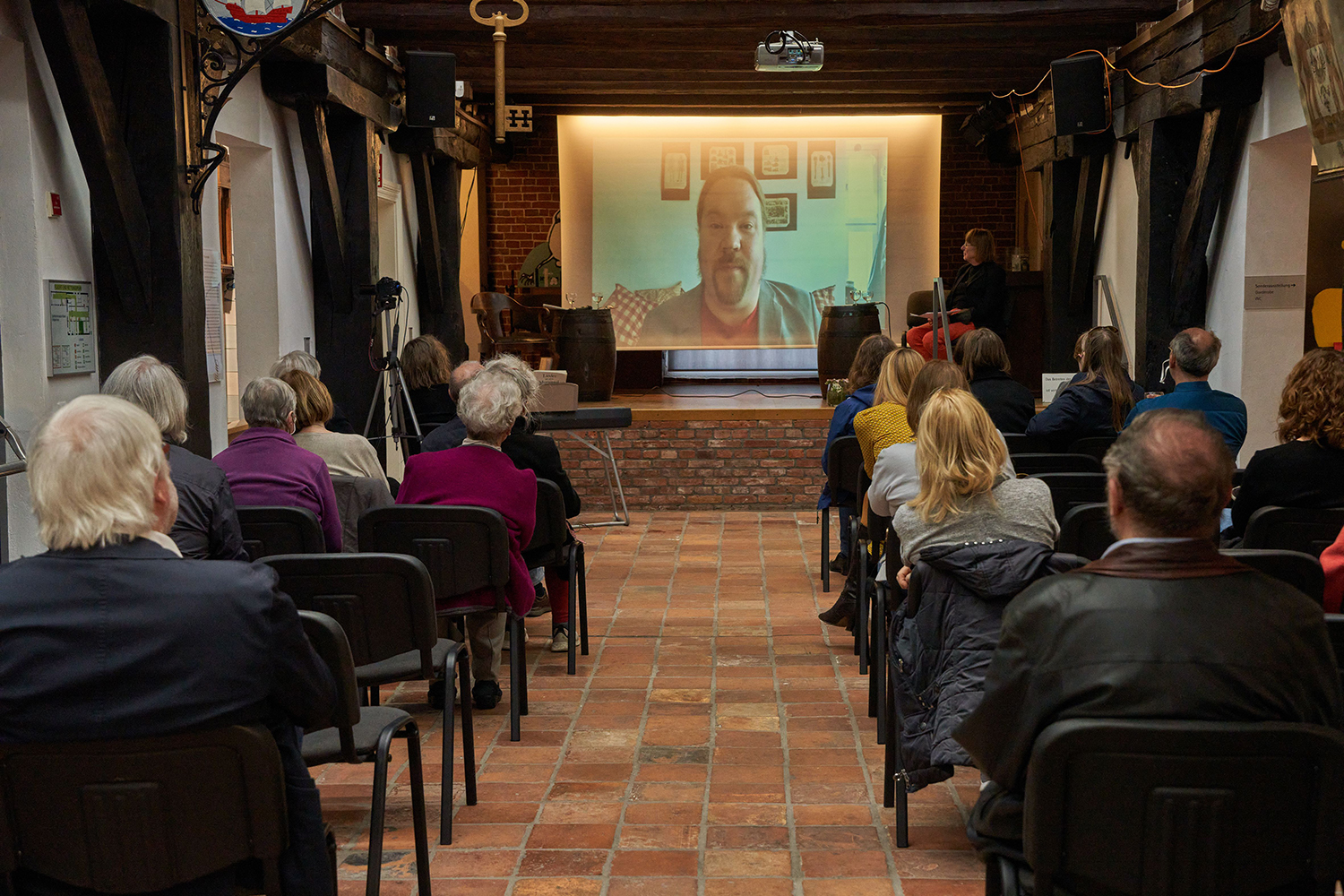
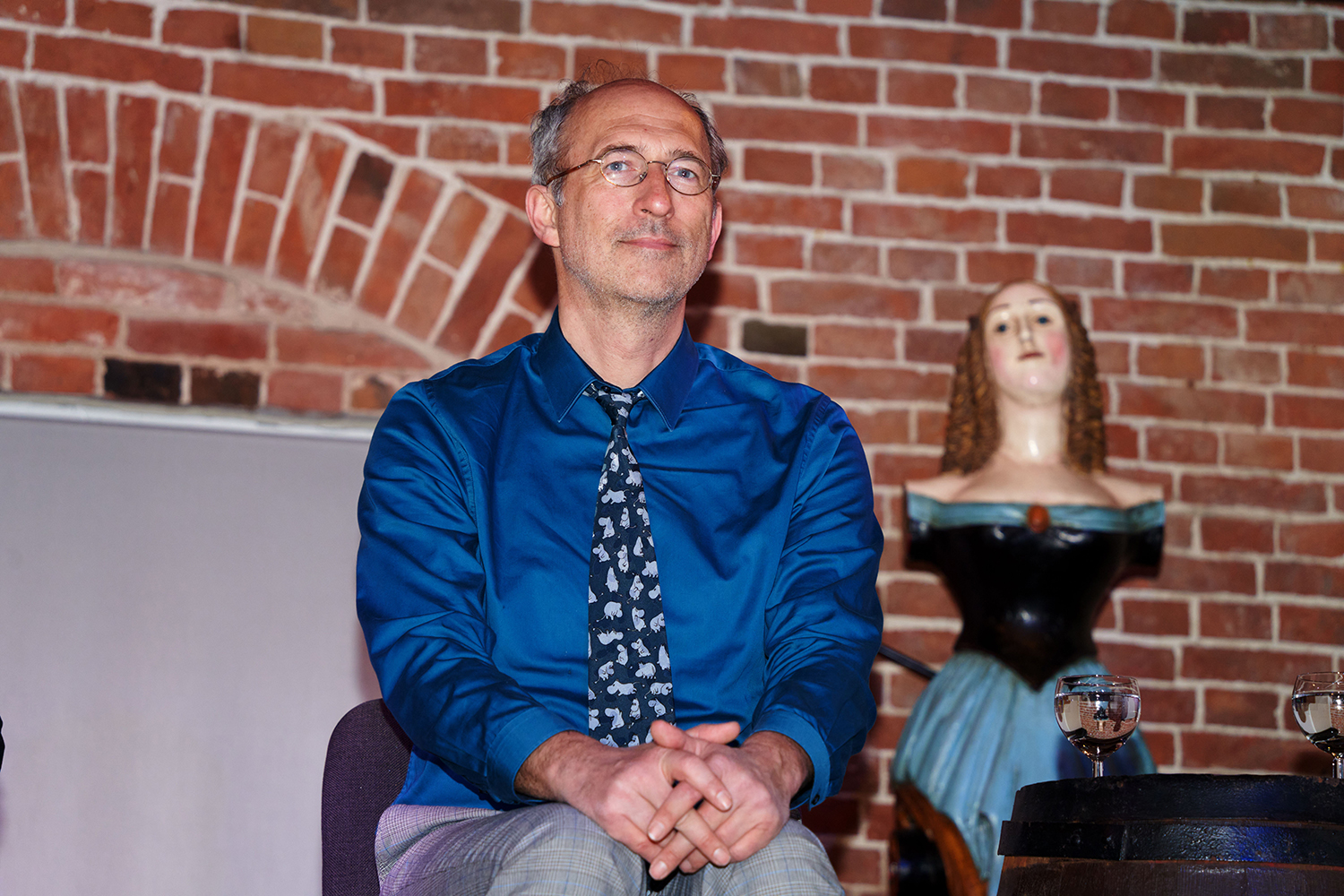
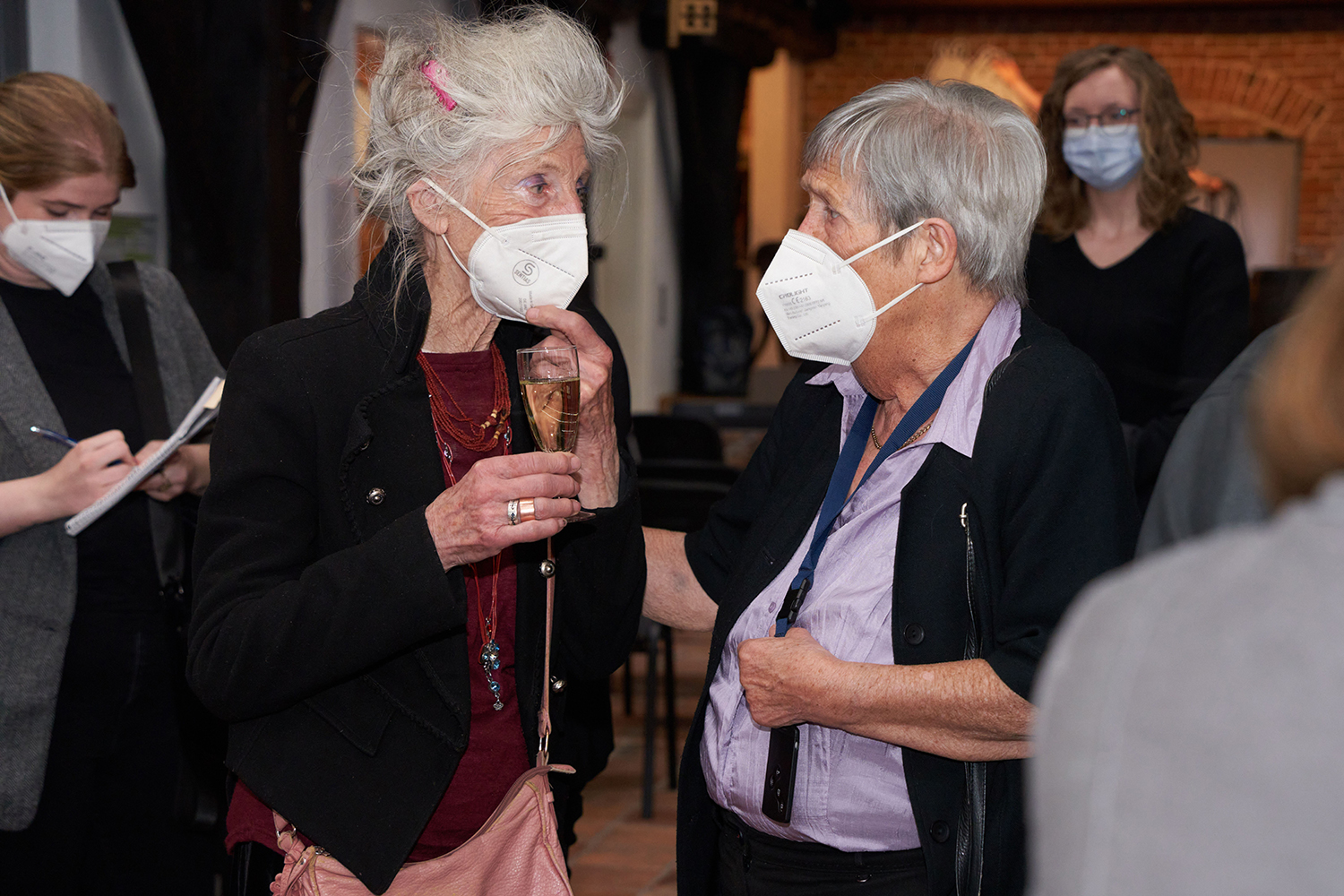
A background: Finland, Ny Tid and Moomin in 1947
The political significance of Tove Jansson’s publication of Mumin und der Weltuntergang in
socialist magazine Ny Tid
By Janne Wass, current editor of Ny Tid
Mumin und der Weltuntergang was originally serialised in the radical Finnish left-wing magazine Ny Tid (“New Times” or “Modern Times”) in 1947. By this time Tove Jansson had released her
first two children’s books about the Moomins – and the Moomin character had appeared as
doodles or caricatures in the satirical culture magazine Garm even before that. (The first
Moomintroll was a caricature of Immanuel Kant, and was drawn as a reply to an opinion piece.
Jansson disagreed with the piece and decided to draw Kant as an angry troll.)
The political and mental landscape during the birth of Mumin
The world into which the Moomins were born was one of great confusion and uncertainty.
During WWII, Finland staved off the Soviet army during the so-called Winter War and the
Continuation War, but at a great price. A generation of Finns were already haunted by the
experiences of the Finnish civil war in 1918, just a year into the country’s independence. The
war was fought between the Reds and the Whites. Contrary to popular belief, the Reds were not
challenging Finland’s independence. The civil war was an attempted revolution where the
socialist working class, impoverished and working under dreadful conditions, were inspired by
the 1917 Bolshevik revolution in Russia, and wanted to establish a socialist system in Finland
as well. Great atrocities were committed on both sides during the war, and the aftermath left
behind it a country divided. After the Whites won the war, Finns who had fought on the side of
the Reds, or supported them, were made paria, second class citizens. Red mothers were
demonized and their children often made orphans with parents either dead in the war, executed
for “crimes against the nation” or in concentration camps or prison. Families were torn apart and
the war left a deep wound in Finnish society, which has still not fully healed.
Politically, the civil war led to a ban on organised communist politics. The leaders of the Finnish
communist Party, with Otto Ville Kuusinen at the helm, fled to Moscow, and socialists and
communists in Finland were forced to work either underground or join the moderate Social
Democratic Party. Things were not improved by the so-called Lapua movement of the thirties.
The Lapua movement was Finland’s answer to the rise of fascism in Europe, and would it not
have been for a few centrist politicians at the helm of Finnish politics, Finland could have seen a
fascist coup. Even so, the Lapua militias terrorised leftists, descendants of the Reds and other
“undesirable elements” that did not conform to their view of Finnish nationalism.
WWII briefly made Finns put aside their political differences, and for two wars, between 1939
and 1945, the Winter War and the Continuation War, the Finns staved off the mighty Soviet
army. Capitalists and socialists, proletariat and bourgeois fought side by side against the
Russians – and alongside the German National Socialists, who were the only armed forces to
come to Finland’s aid. Adolf Hitler was not necessarily an unpopular figure among the Finnish
bourgeois during the war.
The peace agreement between Finland and the Soviet Union felt like a defeat to many Finns,
who had dreamed of a Grand Finland after marching toward Leningrad during the Continuation
War (1944–1945). Finland was forced to cede parts of the Eastern areas of the country to
Russia, who also dictated strong terms and influenced much of Finland’s foreign policy in the
decades to come – in what is now known as “Finladisation”. One of the terms of the peace
agreement was that Finland lift the ban on communism.
Tove Jansson’s bourgeois background
This was the background to the birth of both Ny Tid and the Moomins. Pinning down Tove
Jansson’s exact political leanings has proved hard for scholars. She was very much part of the
Swedish-speaking bourgeois elite of Helsinki, born to artist parents in 1914 in the upper-class
neighborhood of Skatudden or Katajanokka. She spent her youth drawing, painting, studying
and traveling in Sweden, France, Germany and Italy. However, she was also an independent
and strong-willed young woman, who frequently butted heads with her father Viktor, a
conservative Germanophile, who, at least to some extent, supported Hitler and the fascists of
Germany.
Jansson found her home as an illustrator in the Swedish-language satirical magazine Garm,
where she published her first illustration in 1929. All in all, during her career she made over 100
cover illustrations for Garm, and several hundred more other pictures. Garm was perhaps the
most important anti-fascist culture magazine in Finland, despised by the nationalist Lapua
movement and by many in the conservative circles. Tove Jansson was vehemently opposed to
fascism and the Nazis, and published several caricatures of Hitler, to her father’s dismay.
Socialist Ny Tid and Tove’s love affair with its editor
As stated, in 1945 the Communist Party of Finland was again allowed to operate freely. It
entered Finnish politics under the socialist umbrella party SKDL, or the Democratic People’s
League of Finland. At the time, the Swedish-speaking population of Finland amounted to around
350,000 people, or about 10% of the entire population of the country, and these were
represented among the entire political spectrum, including SKDL and the communists. At a time
when magazines and newspapers were the primary forums for news and debate, it went without
saying that all major political parties would also have journals and magazines in Swedish. Thus,
in December 1944, the first test issue of Ny Tid was published. During its first years, Ny Tid was
known both as Folktidningen (“The People’s Journal”) or Ny Tid (“New Times” or “Modern
Times”), and colloquially as “Folktidningen Ny Tid”. While it carried both Soviet and Communist
propaganda, it was also a news outlet with sports and culture pages, it published poems, film
reviews, novellas and science articles. Rather quickly it became a forum for discussion and
debate among left-leaning intellectuals, philosophers and not least authors of the era, a tradition
which it has carried on through its 77-year history. Many of the most lauded Finnish authors
have a background as writers for Ny Tid.
A central figure for Ny Tid became Atos Wirtanen, a journalist, author and social philosopher
from the land Islands, who had had a difficult relationship with the Social Democratic Party.
Wirtanen was one of the outspoken members of the so-called “peace opposition” during the
Continuation War, a stance he shared with Tove Jansson, his close friend and companion for
seven years. In 1947 Wirtanen was fired from the Social Democratic Party’s Swedish-language
newspaper Arbetarbladet, and resigned from the party. He instead joined socialst SKDL
(although not the Communist Party) and was appointed editor of Ny Tid. By this time Wirtanen
had already been going steady with Jansson for several years. While all friends of Jansson and
Mumin are aware of Jansson’s same-sex relationship with “Tootikki” or Tuulikki Pietil , and
many may know of her longtime relationship with theatre director Viciva Bandler (she and
Jansson were the inspirations for the characters Thingummy and Bob), Jansson’s long,
passionate and important relationship with Atos Wirtanen has only in recent years become
common knowledge – or at least, the seriousness of it. In fact, Jansson even proposed to
Wirtanen at one point. In typical Wirtanen fashion, Wirtanen replied: “Can it be true that we
aren’t married yet? We’ll certainly have to do something about that at some point.” However,
Wirtanen was caught up with his work and politics, and “some point” never arrived. Wirtanen, as
is now generally accepted, was the inspiration for Snufkin.
Tove and the communists
If the recent biopic Tove has been criticized for something, it has generally been that it has left
out Jansson’s interest in politics and current affairs. For over 20 years, she worked as the
principal illustrator at the foremost satirical magazine of Finland, strongly opposing war and
fascism. She hung out with the intelligentsia of Helsinki and sought out independent thinkers
with strong social ideals, like Wirtanen and Bandler. She was interested in philosophy,
avantgarde and social theory. She was a fierce, bisexual feminist, and all her work carries an
ideology of solidarity and multiculturalism. She never officially affiliated herself with a political
party, but the fact that she almost married one of the most prominent socialists of Finland does
at least give us a hint of where her sympathies lay. As does the fact that she happily drew comic
strips for the socialist journal Ny Tid.
In 1947, when Wirtanen took over as editor of Ny Tid, the Moomins were not yet the icons they
were to become. Jansson had published two books to moderate critical and commercial
success, and still considered herself an artist, first and foremost. The children’s books were
made more for her own amusement than as any serious attempt at becoming an author. So
Jansson was happy to draw comics for her longtime boyfriend and intellectual companion, and
always considered her first Moomin comic strips her “gift to Wirtanen” and Ny Tid. Some of the
satire of the strips probably went over the heads of some readers, who criticized the bourgeois
tendencies of some of the characters, in particular Moominpappa, who read “The Bourgeois
News” in the strips, among other things. Thus, Wirtanen (somewhat cowardly perhaps) asked
Jansson to tie together the adventure into a satisfactory ending sooner than she had originally
planned.
After its publication, Mumin und der Weltuntergang, or Jorden g r under, sat in the archives of
Ny Tid for decades, more or less forgotten, until 2007, when Ny Tid’s editors decided to collate
the strips between two covers, and it was published through Ny Tid’s publisher, the
reader-owned company Tigertext Ab. Tigertext has also published the book in Finnish and
English, and through licencing also in Russian, and now, finally, in German, thanks to the
passion and efforts of the Georg von der Vring Gesellschaft.
Bearing in mind the political history of Finland, the demonisation of socialists after the civil war
and the widespread hatred against communists among the Finns, not least among the
Swedish-speaking bourgeoisie that Jansson’s family represented, Jansson’s decision to have
her comics printed in the most radically socialist Swedish-language magazine in the country is,
in my opinion, more significant than Jansson scholars of the past have realised – probably
because Mumin und der Weltuntergang has been such an obscure publication that it has not
been paid any significant attention. The story itself, like most of Jansson’s output, stays clear of
blunt political commentary. But when read with its background and publication history in mind,
the book opens up for rather interesting social interpretations.

